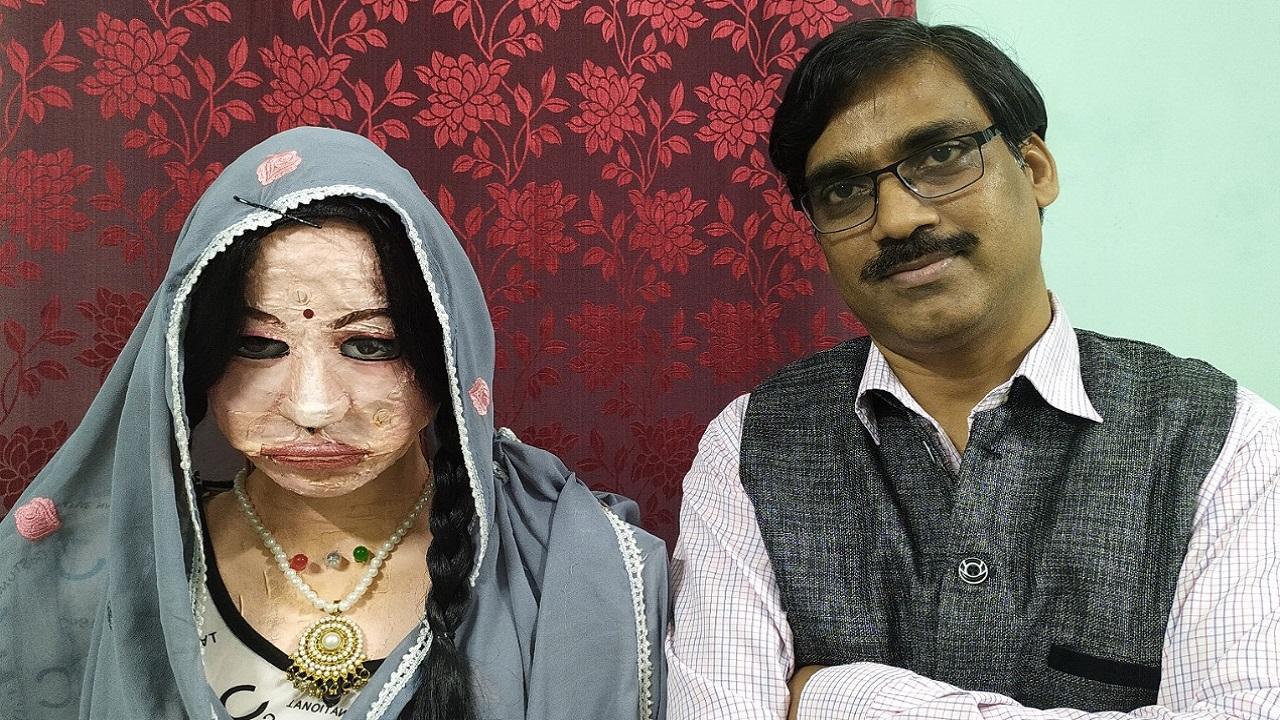Shalu, a humanoid robot prototype, is developed using waste material like cardboard, copy covers, newspapers, thermocol, plastic boxes, aluminum wires and sheets.

Dinesh Patel with Shalu, a humanoid robot prototype.
Dinesh Patel, a computer science teacher at Kendriya Vidyalaya in IIT-Bombay, has developed a robot named ‘Shalu’ - which speaks nine local languages and 38 foreign languages.
Shalu, a humanoid robot prototype, is developed using waste material like cardboard, copy covers, newspapers, thermocol, plastic boxes, aluminum wires, and sheets.
“The face is made using plaster of paris. My major focus was on its programming. It took three years to develop it and the expenditure was around Rs 50,000,” Patel told mid-day.
“It recognises people and objects. It can perform many human gestures such as shaking hands. It can smile and display emotions like happiness, anger, and irritation,” Patel added.
Similar to ‘Sophia’, a robot developed in Hong Kong, Shalu can converse on many topics. “Shalu can be used as a robot-teacher in a classroom. She can ask questions from students, answer their questions. She can also tell current news, horoscope, and weather update. She can talk on various topics and can also solve math problems. She is also capable of sending SMS and mails,” Patel explains.
Patel claims that Shalu can speak in 9 Indian languages (Hindi, Bhojpuri, Marathi, Bangla, Gujarati, Tamil, Telugu, Malayalam, and Nepali) and 38 foreign languages like German and Japanese.
Inspired by the Bollywood movie ‘Robot’, Patel said he thought that there can be a Chitti (a humanoid robot played by Rajinikanth in Robot) in our life too who can solve our problems. “When I saw Sophia, I realized, it is possible and started working on it. I have dedicated this robot to India’s daughters and towards Beti Bachao Beti Padhao mission,” he said.
Dinesh Patel, a Computer Science #teacher at Kendriya Vidyalaya at @iitbombay, has developed a robot 'Shalu', using waste materials like plastic, cardboard, wood, aluminium, etc. pic.twitter.com/75Y6YUIW0G
— Dr. Ramesh Pokhriyal Nishank (@DrRPNishank) March 20, 2021
In the next step, Patel plans to use 3D printed body parts and a latex face for smooth movement and proper facial expressions. “I want to make it more efficient,” he added.
 Subscribe today by clicking the link and stay updated with the latest news!" Click here!
Subscribe today by clicking the link and stay updated with the latest news!" Click here!









